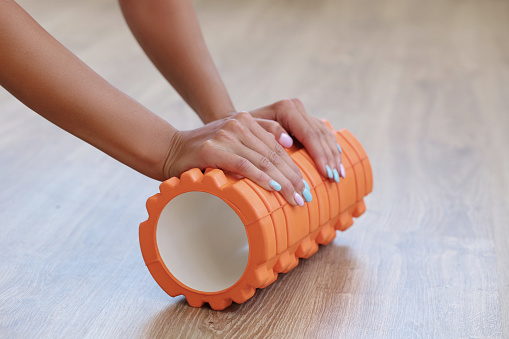5 Common Mistakes New Exercisers Make
Article posted in: Fitness
Starting an exercise routine can be exciting or intimidating. Once your doctor gives you the OK, where do you start? Is it “no pain, no gain?” Is all or nothing the only way to go? Should you walk around a local lake or run on a treadmill for optimum fat torching?
Before you plunk down your cash and sign on the gym contract’s dotted line, you’ll want to make sure you avoid injury and are maximizing your calorie burn. Take a look at some common mistakes new exercisers make in—and out—of the gym!
1. You say “no thanks” to a personal training session
Maybe you used to work out, but haven’t really been serious about it recently or an injury or your weight or another factor has kept you away from the gym. Perhaps you’re about to sail your maiden voyage on board the U.S.S. Fitness. Where do you start? At your doctor’s office.
Be sure to check with your physician to make sure you are healthy enough for exercise. If you have an injury or an issue with range of motion, ask your doctor if there are exercises you should do or avoid. Now that that’s out of the way, the next person to talk to is a personal trainer.
Before you conjure images of SNL’s “Pumping Up With Hans and Franz” and put on your jogging shoes to run away from this idea, think about every new venture in your life: someone taught you how to tie your shoes and you learned how to read at home or at school, so exercise is no different. Don’t be embarrassed to learn. No one expected you to pick up Golden Book’s “The Poky Little Puppy” and start reading without a background in phonics.
One reason gyms sometimes offer a free session with a personal trainer is to get you set up with a workout routine and give you the chance to get familiar with the machines and the the movements so you can get the most out of your workout. (Hey, if you’re gonna do it, you might has well make it count, right?) Some people opt for regular training sessions and some ask a trainer to show them around, set up a routine and only go back when they need a new routine or want to change up their workouts. Do whatever you – and your budget – feel comfortable with, but at least check in once with someone who can show you the ropes.
Some fitness buffs like using a pedometer, a free fitness app like Jillian Michaels Slim Down or videos on YouTube like The Fitness Marshall, but Tony Avvisato, a pro-card carrier in national bodybuilding and former active duty Marine, said he recommends getting a personal trainer with schooling behind the certification.
“Learn how to do perfect form so you develop good habits,” Avvisato said, “that way you don’t injure yourself.”
“We all gotta start somewhere,” Avvisato, who has been training for 18 years, added.
2. You do too much too fast.
Maybe you glossed over No. 1 above and said “maybe later to the personal trainer.” (If so, go back and read it! It’s No. 1 for a reason). If you pick up a workout routine from a friend or family member who has been working out for years, don’t expect to deadlift the same amount of weight or to keep up with them in a race. You aren’t expected to keep up. Drop your ego and any expectations (aside from having fun, working hard and getting a fit body) at the door. Leave them in the locker room. Even Olympic athletes started walking before they could run.
Also, doing too much too soon can have deleterious effects. Lifting too much weight or pushing yourself beyond reasonable limits can lead to an injury that will set you back or burn out. Have you ever gotten so excited about a project that you jumped in and spent hours making sure you completed every last detail only to wake up the next day and be completely sick of that project? You never want to see that project again, right? You don’t want that to happen to your workouts.
Quality over quantity. If you know how to target your muscles or how to hit your target heart rate more efficiently, your workouts don’t have to take all day. You can still get results while getting in your My Daily 3.
Some experts suggest doing cardio two to four times a week and strength-training about two to three days a week. If you raise the incline on your cardio machine or bump your speed up, don’t raise your weight load during resistance training on the same day. Give yourself a chance to bask in your awesomeness for making progress before you celebrate another win while giving your body a chance to figure out what exactly is going on!
Conversely, don’t check the scale the next day or measure your waist after a week and get discouraged. Your body took a lifetime to look the way it does, so cut yourself some slack and remember that change takes time. It might take two to three months for your body to accept this new active habit. Looking for some concrete encouragement? Read on!
3. You never set goals or keep track of your progress.
Something that many beginners do is forget to keep track of their progress. If you started with one set of 12 repetitions (the number of times you complete a movement), write that down so when you’re up to three sets of 12, you can see how far you’ve come!
It also helps to keep track of your capabilities. If you bench 30 pounds and write it down, the next time you do a chest workout, you’ll know where to start. If you used an arc trainer at a certain speed or until you burned x amount of calories, it’s good to remind yourself where you left off when you start your next fitness session.
“[You] need to start somewhere,” Avvisato advised. “Make small goals because in the long run, it’ll help you reach that big goal. There always needs to be a goal, no matter if it’s big or small.
4. You avoid strength training all together.
There are usually two camps to those who avoid lifting weights: those who think cardio is enough and those who think they are going to get too bulky with resistance training. Ladies, your DNA typically will not allow your pecs to look like Vin Diesel’s. The only thing weight training will give you is a revved up metabolism from the extra muscle on your frame, protection against osteoporosis, a toned body and tighter curves.
For anyone over the age of 30, you are losing muscle mass every year! Fight the dropping metabolism and saggy body parts by adding weights to My Daily 3. Add some weights and 50-year-old you will knock 20-year-old you’s socks off! You’ll wonder why you didn’t start sooner.
5. You skip the warm-up and the post-workout stretch.
Warming up and stretching are so very important and so very often overlooked. Most people wake up in the morning and need a coffee or a shower (or both) to wake them up, both physically and mentally. Easing your muscles into movement is very much the same concept. A warm up primes your nervous system and can help battle fatigue and skipped heartbeats, according to Michele Olson, a professor of exercise science at Auburn University at Montgomery, Alabama.
Before you start your workout, limber up your muscles with some movements – five to 10 minutes should be all you need. Marching in place while doing arm circles or a few squats can help ready for body for a workout. Experts at the Massachusetts Institute of Technology suggest combining joint rotations with light aerobic exercise before sliding into stretches.
“It is very important that you perform the general warm-up before you stretch,” the former MIT Tae Kwon Do Club’s text includes. “It is not a good idea to attempt to stretch before your muscles are warm (something which the general warm-up accomplishes).
“Warming up can do more than just loosen stiff muscles; when done properly, it can actually improve performance. On the other hand, an improper warm-up, or no warm-up at all, can greatly increase your risk of injury from engaging in athletic activities.”
Dynamic stretches are preferred to static stretches for warming up. An example of a dynamic stretch would be knee lifts. An example of a static stretch would be sitting with your legs outstretched and trying to touch your toes.
Imagine a piece of taffy. If you leave it outside in the winter, it is cold and hard and will snap when you try to bend it. Leave that same piece of taffy in the sun and it melts, giving in to manipulation. Think of your muscles as delicious taffy. Warming up will give you summer sun taffy.
Taking a few tips from your yoga or Pilates instructor during your post-workout stretch and cool down can help, too.
“Yoga and Pilates also help improve balance and core strength,” Olson told Next Avenue, “public media’s first and only national service for America’s booming 50+ population,” according to the website. “Both are important in protecting the hip joints and spine, which gives us a more stable posture and stronger hip and spinal bones and muscles.”
And please, please, please don’t bounce when you stretch! Take 15 to 20 seconds during a stretch to allow your brain to send a message to your muscles that it is time to relax. Ballistic stretches will only cause your muscles to tighten and could lead to injury, according to MIT.
And remember, your workout should be a fun-out. Staying interested and having a good time will increase your mindfulness and lead to greater progress and a lower risk of injury.
“We all have our bad days,” Avvisato told The Leaf. “Sometimes when we’re feeling like sh-t and we force ourselves through it, they’re some of our best workouts.”











